This part of the studies will be addressed by 6 exercises. The reading and references focus mainly on Deleuze’s work on Difference and it is clear to me that an important outcome will be how to understand Difference with respect to the visual art curriculum. It can easily be misunderstood; I will work to understand how he formulated his positions, be aware of layers of meaning in his work. My tutor suggested I read Derrida, Foster and Pollock and take note of the advice that Descombes and Malcolm Richards are more accessible than many of the works listed in the student guide with regards to reading and references. I could only get a hard copy of Difference and Repetition by Gilles Deleuze at our local bookstore and downloaded a Kindle copy of the work of D Olkowski, Deleuze and the Ruins of Representation. I found great value in a series of 4 lectures ( YouTube) by Todd May, an American Philosophy professor, on Deleuze. During this studies I became aware of art as part and functioning within cultural and historic developments.
An interesting quote by Cezanne caught my eye: “One does not put oneself in the place of the past, one only adds a new link”
Exercise 4.0 Account for similarities and differences in 3 columns with regards to painting of The Sower by Millet (1850) and Van Gogh (1889) The differences need to be underlined
| JF MILLET | SIMILARITIES | V VAN GOGH |
| Painting dated 1850
| Oil painting of a peasant man sowing | Painting dated 1889, done in Saint Remy, a different location.
Done after Millet
|
| Size 101.6 x 82.6 cm. | Size 64 x 55 cm. | |
| French naturalist | Impressionist | |
| Commission work | Work in close proximity and peasants | Copy after Millet;
Experiment with topics and develop skills. Millet was a role model – Van Gogh searches for meaning in these works in later years, a recurring theme. |
| Did more studies | ||
| Reference to parable in Bible | ||
| Lived in a century of political unrest | ||
| Mourned the ‘forced’ migration to city life | Socially aware of oppressed humans
Socialist outlook | Wanted to portray the peasants as real |
| Realistic approach of work with regards to an idea of real humble life/work in rural areas | ||
| Sombre colours, soft brush | Vivid colours and brush strokes | |
| They challenged tradition of art with regards to being contemporary and define reality and meaning of their times as well as interpret an idea – the sower | ||
| The Sower looks as if he grows out of the landscape and makes him dominate the pictorial space and gives the viewer a low viewpoint | Depictions of the peasant is similar in that they gave the figures an externalising spirit. | The Sower is a smaller figure in vivid colours shows how he developed his own interpretation and impressionist style |
| They did not use their paintings to advocate change | ||
| Artist intent and mindset was very much aligned with regards to meaning of the work | ||
| Sower wears boots | Dress is culturally correct | Sower wears clogs |
| Figure in distance struggles – his back is extended backwards | Figure in distance works with more ease | |
| Looks like early evening – twilight. | Hard labour is being done | Difficult to see the time of day – the yellow sky could depict the sun, which was important to van Gogh |
Van Gogh did more than 30 works of The Sower that were “translations” of the work of Jean-François Millet. He never saw the original Millet work, but worked from a small etched copy by Paul LeRat (1873) Van Gogh did not intend for his works to be literal copies of the originals. Speaking specifically of the works after Millet, in letters to his brother Theo, he explained, “it’s not copying pure and simple that one would be doing. It is rather translating into another language, the one of colours, the impressions of chiaroscuro and white and black” (full letter: http://bit.ly/let839) So Van Gogh was not merely copying and repeating the process, he discovered new ideas in that process as he experimented with the ideas.
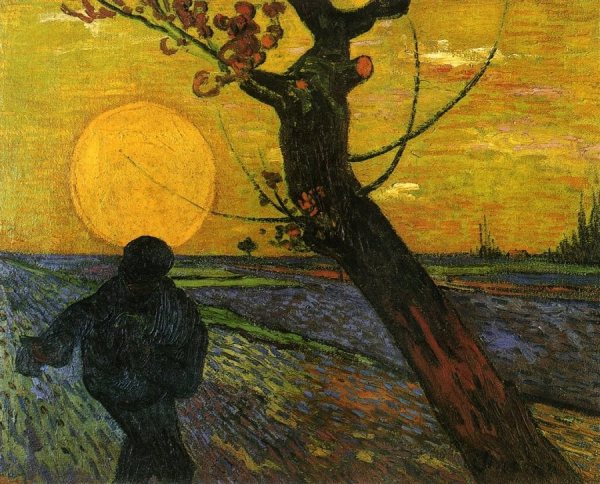
He reflects his experience of the vibrant colours of the South and is more expressive. He talks in a letter to Theo about…”sometimes by erring one finds the right road. Go make up for it by painting your garden just as it is, or whatever you like”. (1968:45)
References
Murphy, Alexandra R. 1984, Exhibition catalogue Boston, MA: Museum of Fine Arts, pp. 31 & 32. Online reading 17 April 2019
Riding, Allan, 1989, Arts Abroad; First Van Gogh’s Millet, then van Gogh’s van Gogh. Archives of The New York Times, 28 October 1989 online reading (A version of this article appears in print on October 28, 1998, on Page E00002 of the National edition with the headline: Arts Abroad; First, van Gogh’s Millet, Then van Gogh’s van Gogh. Order Reprints| Today’s Paper|Subscribe)
The Pain of Pastoral Life: Millet’s impact on van Gogh. A Youtube video watched online: link
Fayard, Judy, 1998. Van Gogh Reaps what Millet Sowed, Washington Post article accessed online on 18 April 2019
Zelz Paul and Taylor J C, 1968 Theories of Modern Art, University of California Press, London
Reading on Website of Van Gogh Museum, Amsterdam, 17 April 2019
Exercise 4.1 Look again at Alfred Barr’s Chart for Cubism and Abstract Art and say briefly how it might be understood as information in a system. Briefly compare it to Minard’s map in the study material.
“To see something as information is already to see it within the system…” : Bateson as referenced in the study material. Here we see that information is not a form of primitive signification, visual mapping techniques are used.
Minard was well known for his cartographic depiction of numerical data on this map of Napoleon’s disastrous losses suffered during the Russian campaign of 1812 (in French, Carte Figurative des pertes successives en hommes de l’Armée Française dans la campagne de Russie 1812–1813). The illustration depicts Napoleon’s army departing the Polish-Russian border.
- A thick band illustrates the size of his army at specific geographic points during their advance and retreat.
- It displays six types of data in two dimensions: the number of Napoleon’s troops; the distance traveled; temperature; latitude and longitude; direction of travel; and location relative to specific dates without making mention of Napoleon;
- Minard’s interest lay with the travails and sacrifices of the soldiers.
Barr’s Chart was an attempt, although very much criticised, to present a structure to the many art forms that had appeared from the end of the nineteenth century – especially contemporary art as he perceived it. One could make the simplification mistake by taking an understanding that various art forms always arise out of another, and then themselves spawn into something new. Barr effectively promoted abstraction and the autonomy of art, as if it was an evolutionary process, which has became very controversial, as modernist was entering a period of redefining art and the art processes, and his chart was too linear. According to the MoMA website, Barr reworked the chart a number times — he never considered it definitive.
- Timeline starts from 1890 to 1935 – at that stage meaning the present, up to date;
- a diagram of the origins and influences of modern art ( Japanese, Negro – outside influencers)
- Names of artists and locations (cities/countries) are linked to Art forms
- Black and red lines indicate movement
- Some art forms were placed in red squares
Both Barr’s Chart and Charles Minard’s Data-map shows an illustration of a timeline of events that succeeded each other. Written language and Mathematical numbers shares the information with the viewer in an illustrative way – almost giving it physical form; In Barr’s case a chart and Minards a geographical map. The information gathered from them is built on difference to give an intended message. The information are gathered in units, written (names and art movements) or in numbers( quantitative) , and across time it causes change within the information/data. One could also see the information as signs that convey meaning about change which was happening in reaction to things that happened before – one uses symbolic words and the other indexical signs to convey meaning. If one look at Saussure’s model, he said that meaning is a product of the differences between words and signifiers – meaning is a consequence of difference.
Exercise 4.2 Summarise Newman’s essay in Art in Theory (200 words)
Link: http://art310-f11-hoy.wikispaces.umb.edu/file.view/The+First+Man+was+an+Artist
For Newman man is the creator and the artist, in the sense that expression in linked to the aesthetic and self awareness to be able to create. He believed that the image of God, “was the first manual act”. Newman argued that the poetic, or artistic instinct has always preceded the utilitarian instinct in humans, since the beginning of time. He argued that mud sculptures of gods had predated pottery, and that poetic grunts and screams expressive of the most primal emotions predated so-called civilized utterances. “Pottery is the product of civilization,” Newman wrote. “The artistic act is man’s personal birthright.” I get the sense that he is referring to myth and primitive unconsciousness – a primal drive to create. He says behaviour had its origin in mans artistic nature – sprang from it.
Newman also questioned the benefits of scientific advancements on the mind of modern man. His position was that science become a strict form of theology that restricted the creative spirit. “The domination of science over the mind of modern man,” he wrote, “has been accomplished by the simple tactic of ignoring the prime scientific quest; the concern with its original question What?” According to Newman, once this question of “what?” ceases to be at the forefront, advancements in the arts and sciences are no longer possible; they became merely the practice of reaffirming old and tried ideas. Like a religion, science is seen to provide an unquestioning proof and an unquestioning truth. This is the true Fall of Man.
Exercise 4.3 A brief paragraph on why I think creation and affirmation are linked when we look at difference.
In the history of philosophy, both difference and repetition have always been understood as negative, derivative qualities that only exist in relation to some unique entity; for example he sees Hegel as a reactive thinker using rejection, opposition and reaction to show difference. Deleuze tries to understand difference in and of itself, and repetition not as something finite, but as reinvention. Deleuze works through ontology, which is a study of what there is, and has the critique that we tend to think about difference as secondary and identity as primary. The only thing that matters is the process of creating, where an internal sparks creates ( pure impulse/elan) and manifests change and transformation. In this process the process is not negativity it is creation that allows for whatever appears, has to allow for other things to appear. It is affirmation of difference in itself – to see difference as the primary pure principle. He takes self- identity from being – being is nothingness.
The affirmation is that things change, difference looks at how it changed (evolved) and the possibilities that came from this changing process. For Deleuze being is equated with unlimited creativity, it is also univocal and has one single voice. The pure form of difference is the actual, which is created by potential. Hallward describes Deleuze’s thinking as a ‘rationalist naturalism’ that ‘affirms the immediate…positivity of nature as production or process’. Deleuze wants to provide an account of the genesis of real experience, that is, the experience of this concretely existing individual here and now – that of being. The actual is always created – like primordial energy.
Exercise 4.4 Giotto’s painting and Deleuze’s bottom rising to the surface, without ceasing to be the bottom’. (200 words)
The painting to serve as the illustration of the quote is, The Kiss of Judas
The quote: He uses the example of lighting to explain the features of his ideas on difference itself, namely (study material and on page 37 in his book, Difference and Repetition) : “...imagine something which distinguishes itself – and yet from that which it distinguishes itself does not distinguish itself from it” . He uses lightning as example – the lightning flash as a moment of intensity before its illuminating quality and before we can even quantify its luminescence. This intensity of the lightning is not in opposition to the darkness from which it emerges – the black sky, also an affirmation of the reality and as a creative process. It is as to think that the lightning leaped out of the background, which is undifferentiated and rose to the surface, meaning to become noticeable. Lightning remains bound in darkness and cannot cancel it out with its light.
Deleuze has, according to Olkowski, established “the underpinnings of representation as the dominant mode of seeing and thinking of the world, regardless of which historical conceptions of time and space obtains at any given moment” (1999:273) She suggests that this could be seen as that representation was constituted in western philosophy and that he analysed it as a particularly restricted and biased form of acting and thinking.
The painting to compare: The painting style, however Renaissance, is linear perspective and it must be considered as a convention which is a cultural attribute, comprehensible only for a quite specific sense of space or perception of the world, and is definitely not an absolute perceptual truth. Deleuze reminds us that concepts/ideas come and go, but the creative character remains – this ability to create always comes back. It is as if Deleuze is challenging us to see how difference gives rise to identities. As a great master Giotto was, he could transform the scene away from conventional style, let his thoughts of the emotions which he captured contribute to the impact of this painting. Even the shield at the back of Christ is something real, not the traditional halo framing his head.
Ozlowski consider the fresco’s to be: “… articulating a highly differentiated kind of pictorial space that sharpens the viewers awareness of the picture surface … a total collapse of hierarchized space: shattered architecture, a completely flat surface. In none of these cases does what appear on the surface correspond to any account of progressive or contemporaneous technological or historical ideas about space.” (1999:301)
- form is destroyed
- relief is renounced
- determination is made
Deleuze, Gilles. (2014) Difference and Repetition, translated by Paul Patton. Bloomsbury Academic, London 2017 reprint.
Olkowski, D. (1999) Deleuze and the Ruin of Representation. Amazon kindle edition
The video is available on: www.khanacademy.org/humanities/ap-art-history/early-europe-and-colonial-americas/medieval-europe-islamic-world/v/giotto-arena-scrovegni-chapel-part-2-of-4
Exercise 4.5 Apply the Dialectic diagram to Barr’s Chart
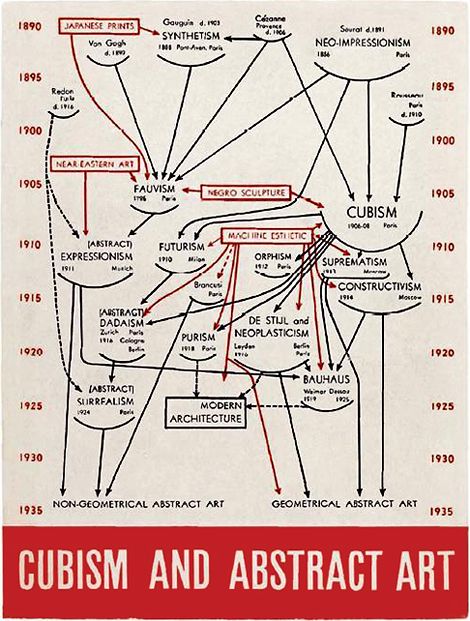
For Hegel, difference is opposition or dialectical. He does not see history as unfolding in a linear fashion, for him it proceeds in a dialectical form. His dialectical form is different to that of Socrates in that you start with a specific situation that generates its own opposition; so you have situations which are internally unstable and generate their own opposition. You now have an unstable situation of conflict, it has to be resolved, and it gets resolved into a new situation; that new situation will have its own instabilities, generate opposition, there will be conflict and you get a new situation.
- The situation is called the THESIS
- The opposition is called the ANTITHESIS
- The new resolved situation is the SYNTHESIS
He is seen as the reactive thinker/philosopher , as everything works by negativity, rejection and reaction. According to Deleuze (2017: 62-67) Difference is the true content of the thesis -according to Deleuze, but he says Hegel keeps difference subordinated to identity, reduced to the negative, incarcerated within similitude and analogy. For Hegel there is not a linear fashion to how things play out. A specific situation/problem is called the thesis, then problems is generated by opposition within this thesis and this is called the antithesis, tensions is generated again by opposition within, called the synthesis, which becomes a thesis. It seems important to be careful in classifications and judgements merely built on the simple dialectic approach.
- I will start with the period 1890 to 1910 on the Barr Chart and the reference to Cezanne.
- The Thesis will be that Impressionists who had their first exhibition in France in 1874, broke with the Realism ideas and their idea was to paint truthful imitations of natural appearances, subjective art, and was a spontaneous experience.
- This created a tension and by doing so they continued the break that the Realists illusionist tradition by emphasising the paint on the surface of the canvas, flattening the sense of perspective through a lack of tonal modeling ( brushstrokes would be directional and not very much ‘order’) – and using daring cropped perspectives which were influenced by Japanese prints. They were also influenced by Japanese Prints with their flat compositions and bold lines. Monet, Sisely and Pissaro remained as Impressionism was opposed by Neo Impressionism around 1885 – Seurat being a leading artist . This will be the Antithesis as they focussed on colour and light and using methods such as Pointillism and Chromo-Luminarism, and with less focus on spontaneity for the joys of the sensuous life and loss of form, and more focus on pure colours.
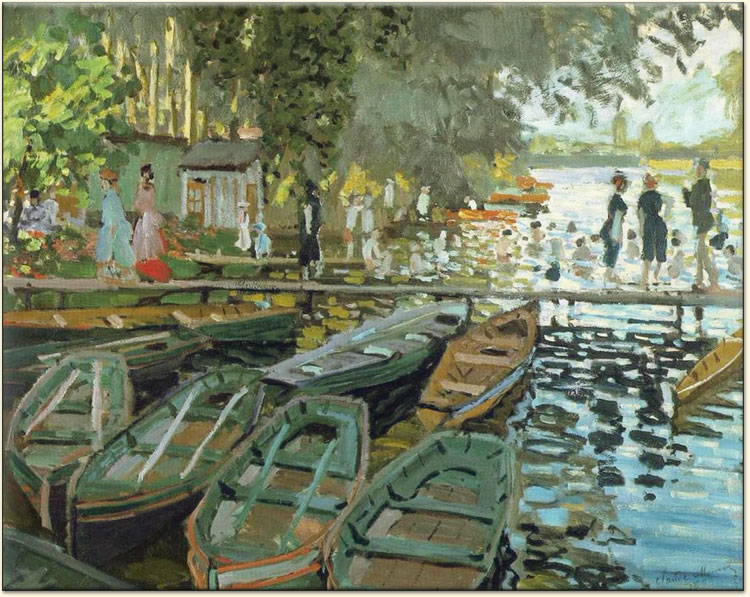
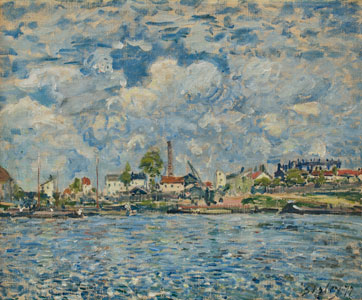
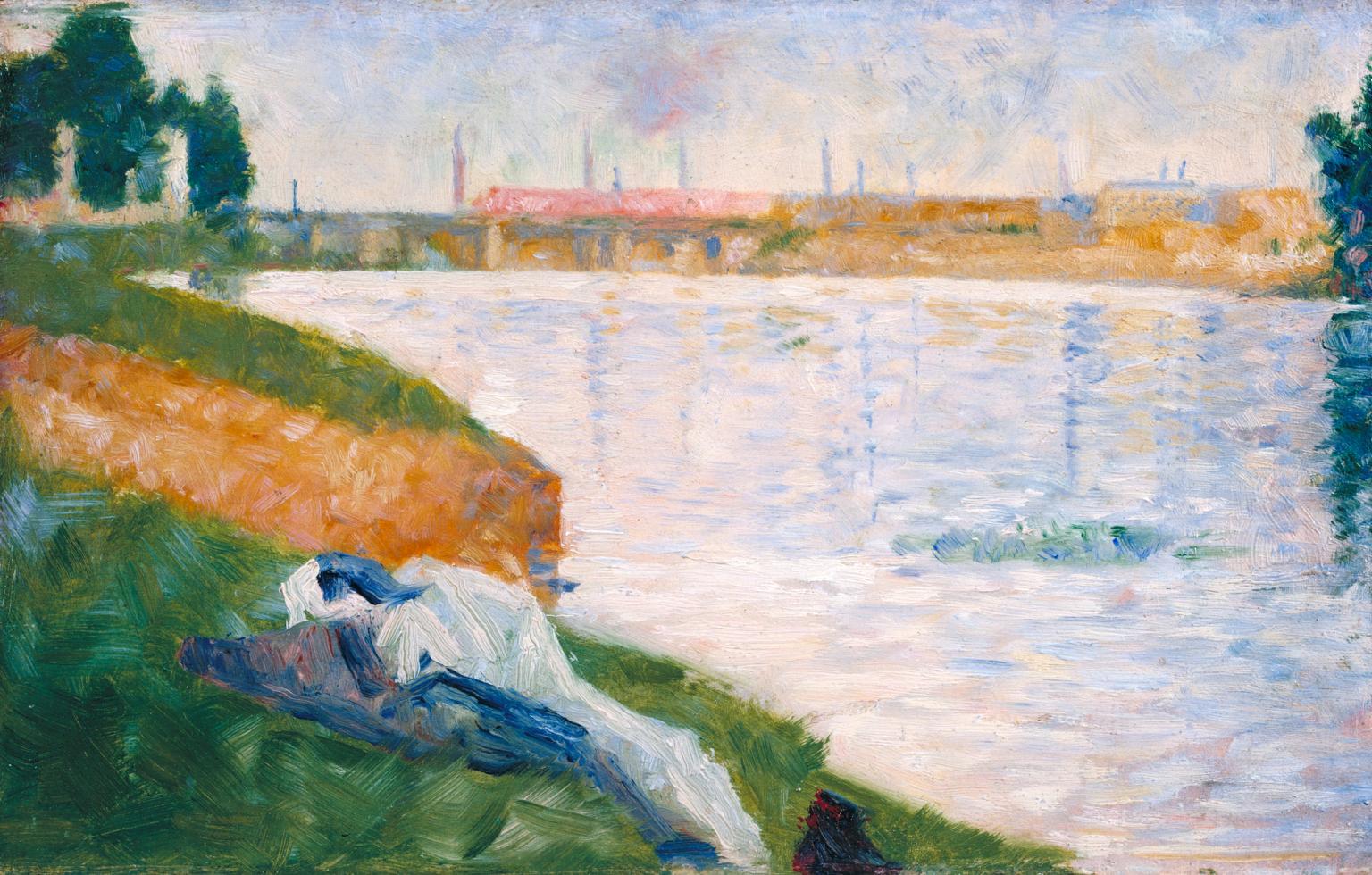
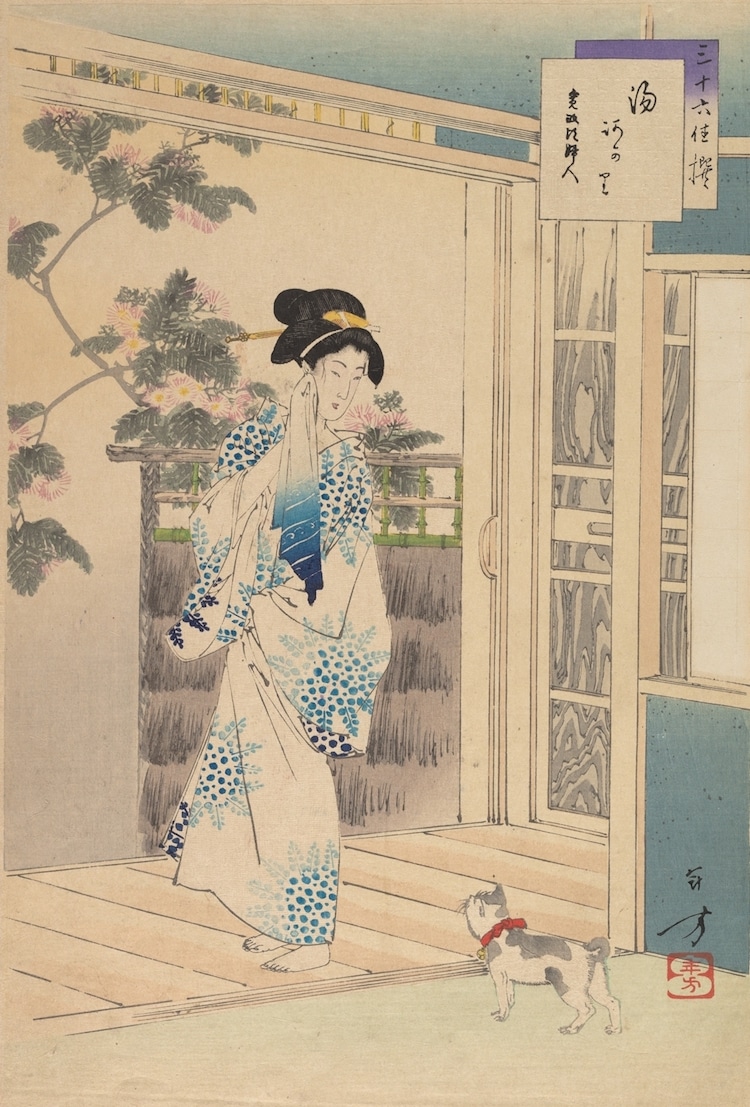
- Paul Cezanne was following Synthetism, the Synthesis and focussed his practice on surface and colour (half and quarter tones) to give rise to form/ modulate. With their synthetic method they challenged the analytic procedure of the Impressionists and the Neo-Impressionists. They supported an intuitive, conceptual or expressionist attitude against the scientific, rational esthetic of their opponents.
- Cezanne influenced the pioneers of Cubism both through his art and his theory. Henri Rousseau, encouraged Picasso and his friends to invent or conceive forms in their paintings rather than to imitate natural appearances. a new Thesis – we see the movement of the dialectic argument as a repetitive process, which is primarily a relationship of opposition to differences. The primitive directness of Rousseau made a deep impression on Picasso, Leger, Delaunay, Apollinaire and others of the Cubist circle.
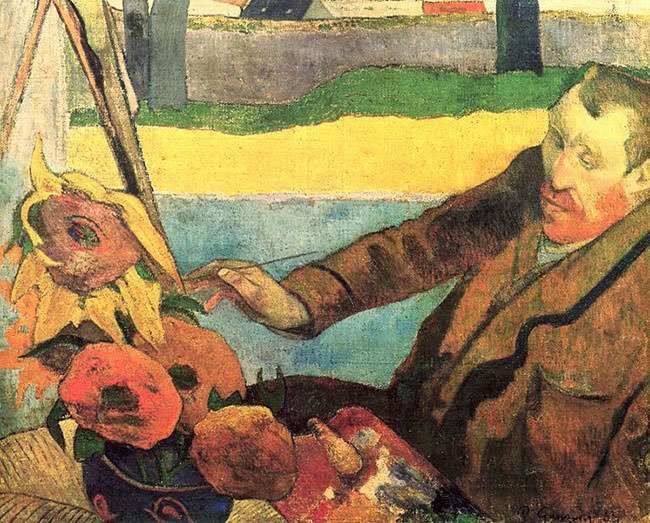
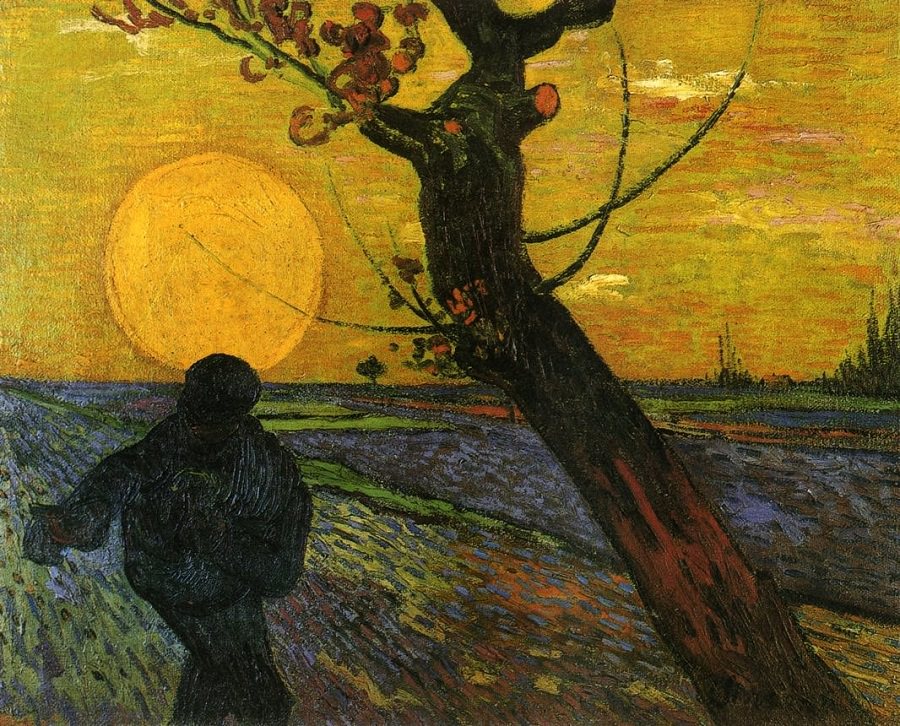
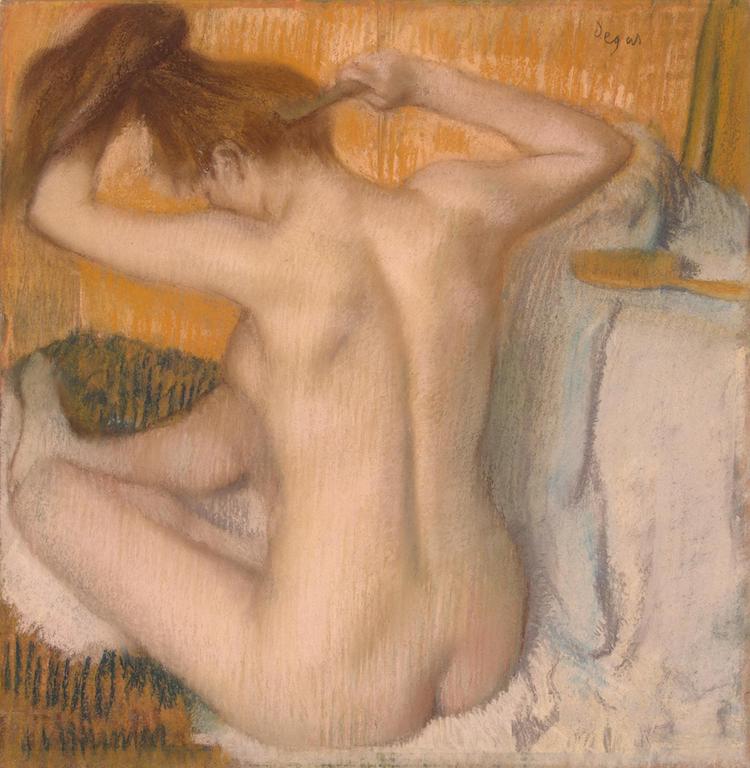
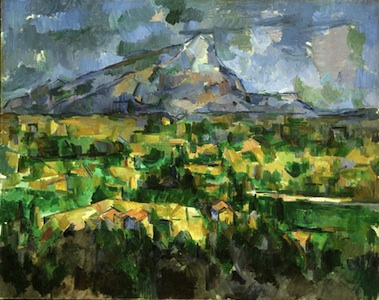
Barr’s opinion was that ” Impressionism was, however, too boneless and too casual in its method to serve as more than a technical basis for the artists who transformed or abandoned its tradition.”(1936:20) So we find that there is a change of ideas on Impressionism within this group such as Renoir, Gauguin, and van Gogh who turned from it. Even among the Cubists and Futurists who continued Impressionisms analytical approach even though they analyzed or disintegrated not the light and color of natural objects but rather their forms and, in the case of the Futurists.
I feel it is important to note that Barr’s Chart was open to being reworked or adapted.
I used as reference to Barr’s Chart, a book downloaded from the MOMO website Cubism and abstract art Author Museum of Modern Art (New York, N.Y.) Date 1936
Publisher The Museum of Modern Art
Exhibition URL www.moma.org/calendar/exhibitions/2748